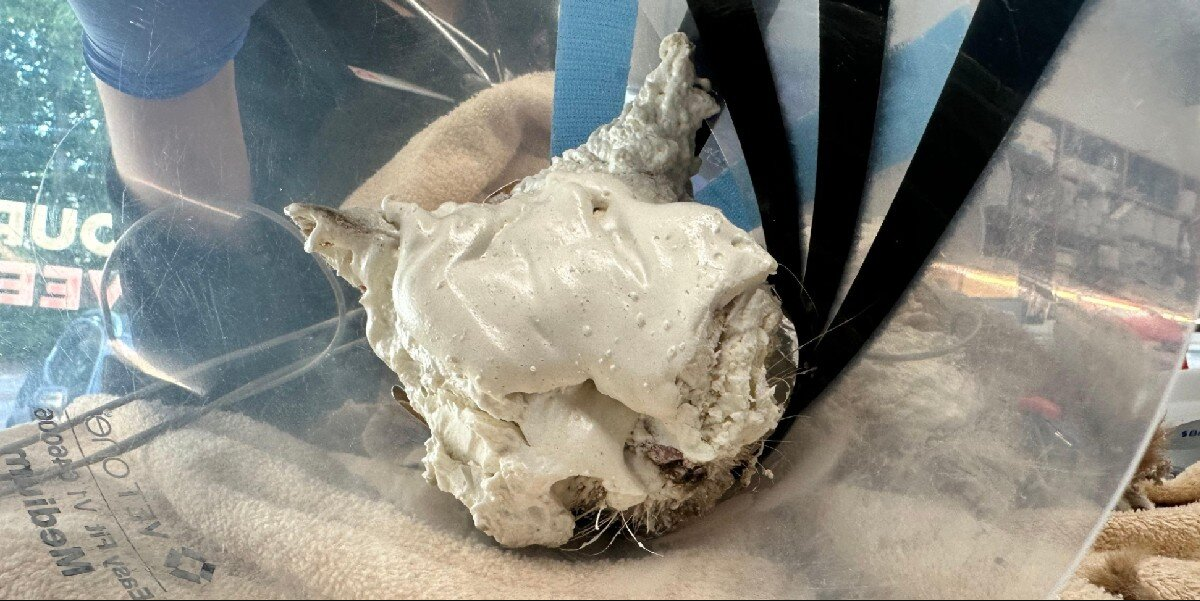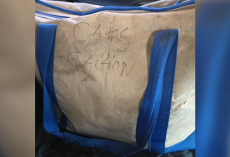One Tuesday in September, Lea Perugini started to worry when she hadn’t seen her 7-year-old orange tabby, Eli, all day. Eli was known for lounging around his Boston neighborhood, but he never wandered far.
“He doesn’t go and wander,” Perugini told The Dodo. “That’s just not his style.”
Out of concern, she began retracing his usual spots. Next door, she noticed a large foam insulation truck parked outside but didn’t think much of it—until her phone rang an hour later.
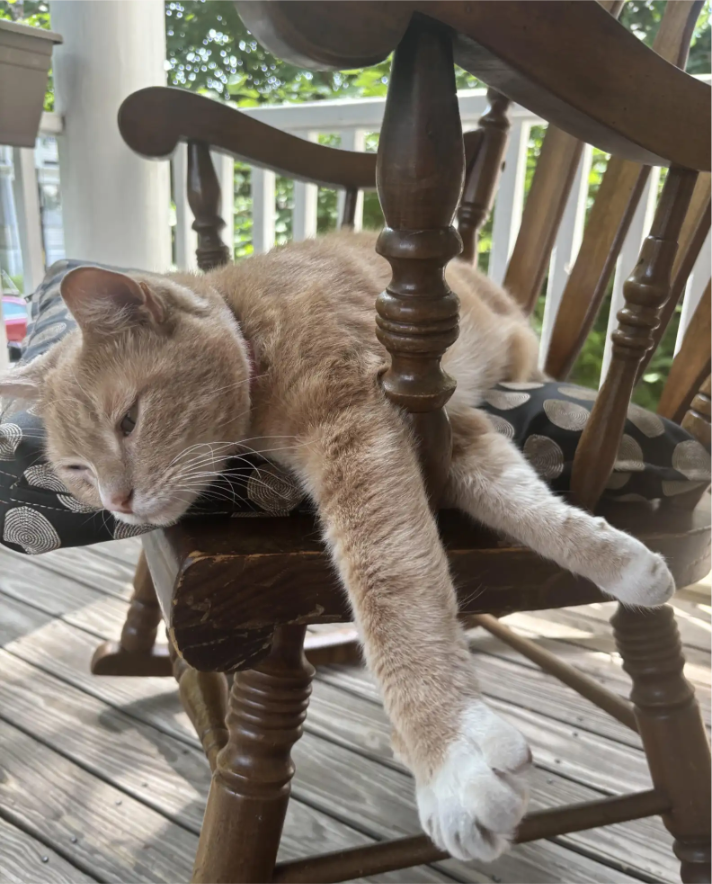
It was her roommate, who had just gotten home and saw an animal rescue worker holding a cat. “She said, ‘Oh my God, it’s Eli, and he got sprayed,’” Perugini recalled. “I started sprinting home—I think I ran the fastest mile of my life.”
As it turned out, curious Eli had wandered into the neighbor’s attic while workers were spraying foam insulation. Not one to shy away from adventure, he likely crept in unnoticed—until things took a disastrous turn.
When Perugini finally saw him, Eli was completely encased in hardened, ivory-colored foam. His entire face and body were sealed in, with only a tiny gap around his nose left for breathing.
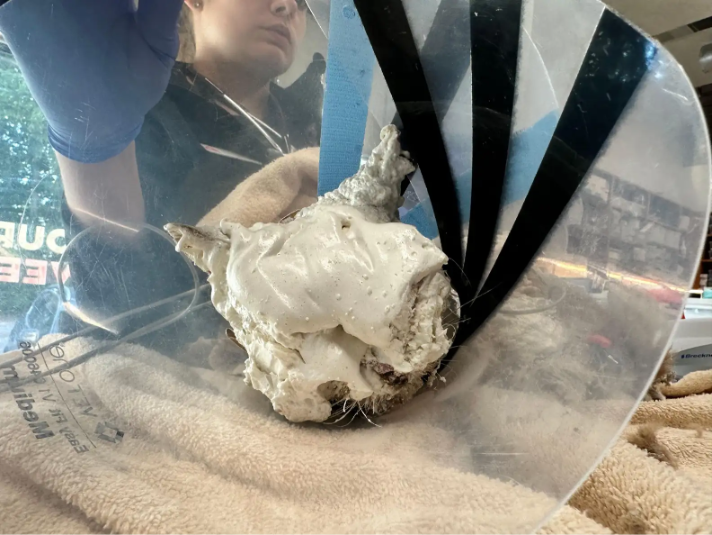
Perugini rushed him to VEG (Veterinary Emergency Group) in Newton, where Dr. Thamires Nunes was preparing for a routine shift—until she saw Eli.
“We were thinking, ‘Maybe it’s just a little bit of spray foam,’” Dr. Nunes said. “Then he came in, and we were like, ‘Oh my God.’ It was way more than that.”
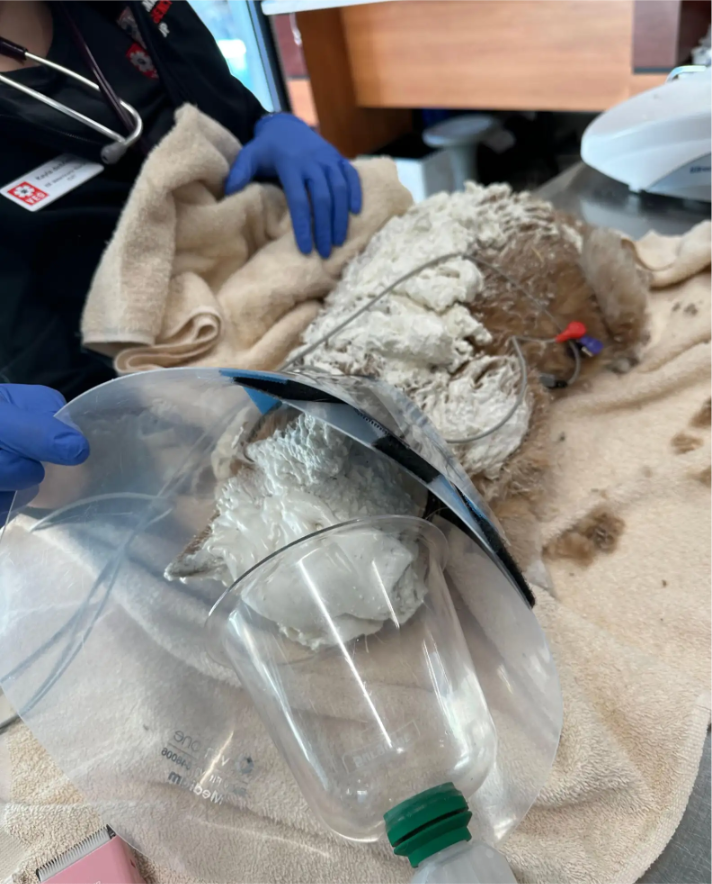
The emergency team sprang into action. Thankfully, Eli could still breathe through a small pocket near his nose, but his eyes and mouth were sealed shut.
Dr. Nunes suspects Eli either blew some foam away or managed to swat at it before it hardened. “He got incredibly lucky,” she said.
After giving him pain relief and sedation, the team began the painstaking process of removing the foam.
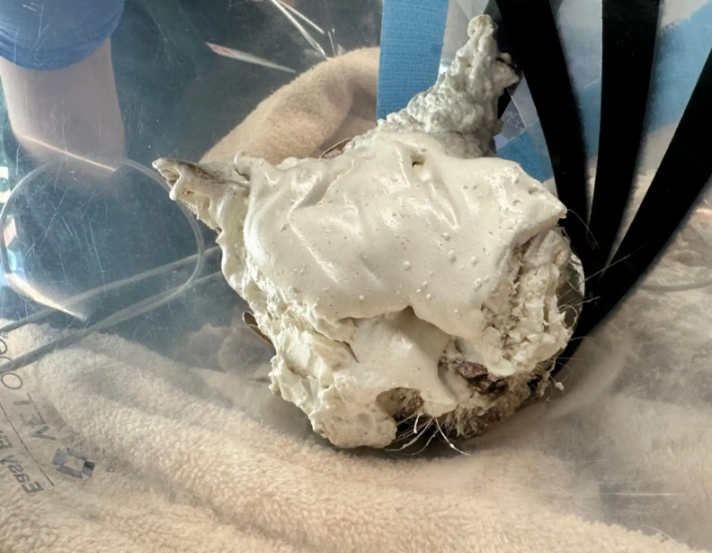
With about five or six staff members armed with razors, clippers, and anything they could find, they got to work—cracking, shaving, and carefully breaking the hardened shell apart.
Dr. Nunes also consulted the ASPCA poison control hotline to ensure the foam wasn’t toxic, and luckily, it wasn’t. They were still worried about his eyes, but Eli’s fluffy coat had actually worked in his favor: the foam stuck mostly to his fur, not his skin or eyes.
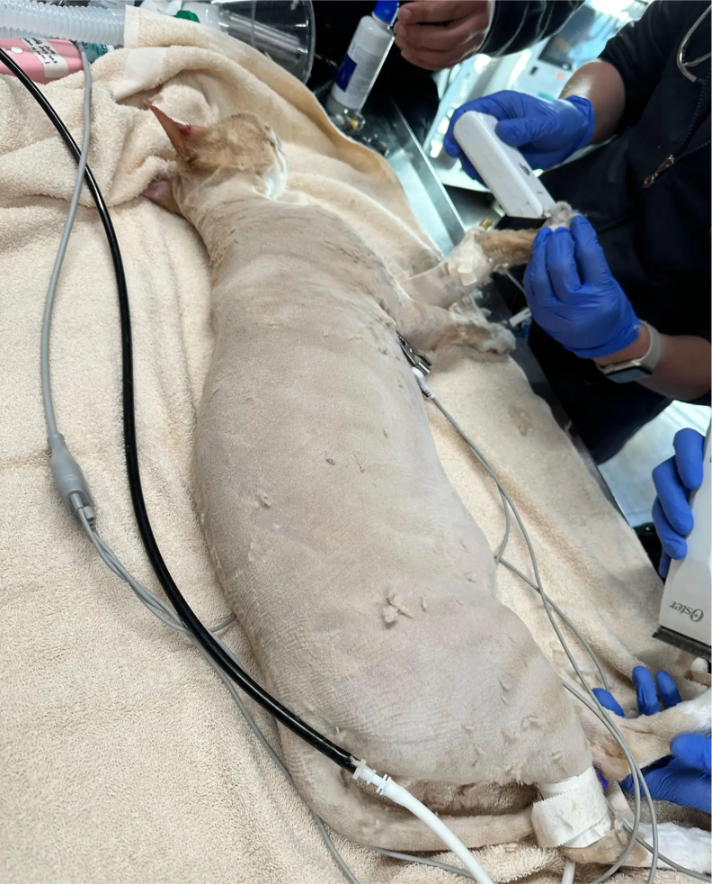
After two hours of careful, meticulous work, Eli was finally free—albeit completely bald.
Back home, Eli didn’t seem bothered in the slightest. “The moment I brought him back, he acted like nothing happened,” Perugini said. “He looked like a sphynx cat. It was hilarious.”
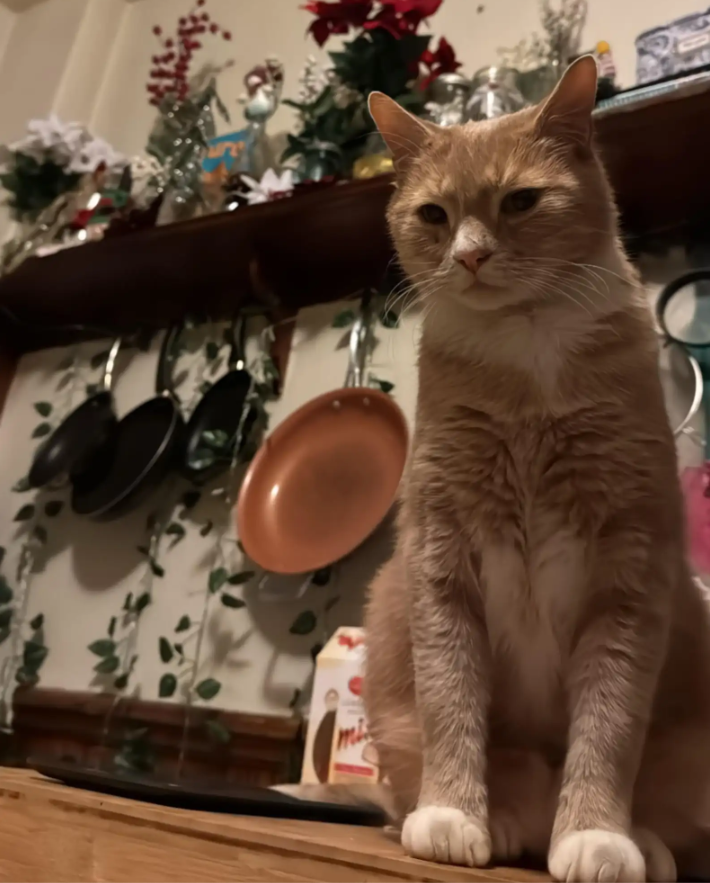
Over the next two months, his orange coat grew back in, and Eli returned to his celebrity status as the friendly tabby on the front steps. “He’s kind of the neighborhood star,” Perugini said.
As for Dr. Nunes and the team at VEG, they won’t soon forget the unforgettable case of the foam-covered cat. “None of us had ever seen anything like what happened to Eli,” she said.

